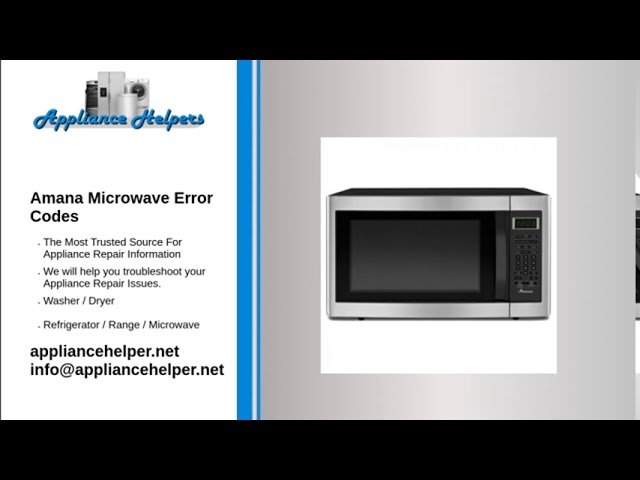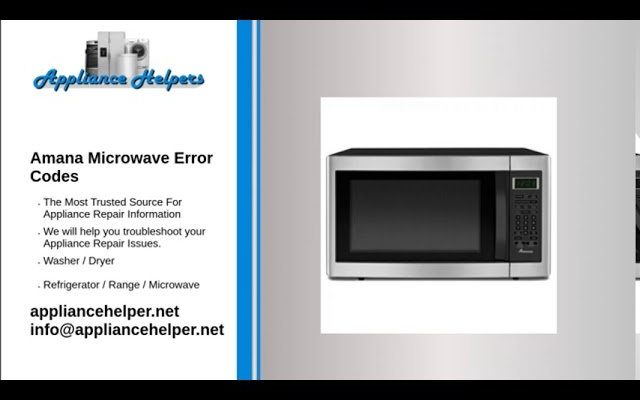
So, what’s the story behind the error code E3 on your Whirlpool microwave? In simple terms, this code usually indicates a problem with the control board, often related to overheating. It’s similar to when your smartphone overheats and starts acting up; the microwave is essentially telling you, “Hey, I’m struggling here!” Ignoring this might seem tempting, especially if it disrupts your microwave momentarily but then vanishes. However, much like ignoring a check engine light in a car, it’s not the wisest move. Let’s dive deeper to understand why.
Decoding the Error Code E3
You might be wondering, “Why does this error appear in the first place?” Error code E3 in Whirlpool microwaves typically signals an overheating issue. Think of it like your microwave having a minor fever. Just like how we need rest and possibly some medicine when we’re overheating, your microwave is doing its best to communicate that it needs attention. It’s a safeguard mechanism designed to prevent further damage, ensuring that the components don’t get too hot.
Imagine if you were running a marathon and suddenly felt faint — you’d stop, right? Similarly, when the microwave’s internal sensors detect excessive heat, they prompt an error code as a way of slowing down, just to cool off. Ignoring it might let the microwave continue its ‘marathon’, but doing so could lead to a more serious breakdown. So, it’s essential to understand both the cause and the necessary action to take when faced with this error.
Troubleshooting this issue often means looking at the environment in which your microwave operates. Is it tucked too tightly against the wall, limiting ventilation? Or is it running for long periods without a break? Just like us, it might need a little space and some time off to cool down. Relocating the microwave to a more open area can help, as can reducing consecutive uses, allowing it to breathe and function without stress.
Can You Keep Using Your Microwave?
Here’s the deal: while the microwave might still operate despite the error showing up, it’s not advisable to keep using it as if nothing’s wrong. Imagine driving a car with a cracked windshield — it’s possible, but is it safe? Not really. The error code acts as an early warning system that something’s wrong, and continuing to use the microwave can exacerbate the problem.
Consistent overheating may lead to more significant issues like damage to the magnetron (the microwave’s heating heart), which can be costly to replace. It’s like ignoring a small leak in your roof — over time, it can cause significant damage not just to the roof but to your entire house. In the microwave’s case, continual overheating may lead to permanent damage, making it non-functional.
Additionally, from a safety perspective, using an appliance that’s signaling a fault is risky. It’s like an athlete continuing to compete despite being injured — the potential for something to go wrong increases. So, while you might get away with using it once or twice post-error, doing so regularly isn’t recommended.
Steps to Take When You See Error Code E3
So, what should you do when error code E3 rears its head? First, give your microwave a chance to cool down. Turn it off and unplug it for about 10 to 15 minutes. This is equivalent to giving your car a break on the side of the road when it starts to overheat. Once it’s had a rest, plug it back in and check if the error persists.
If the problem continues, it might be time to call in professional help. Much like calling a mechanic when your car makes weird noises, a certified repair technician can diagnose the issue more accurately. They can disassemble the device safely and determine if the control board is faulty, replacing it if necessary. It’s not a DIY task unless you’re thoroughly familiar with microwave repairs, due to the high-voltage risks involved.
Furthermore, consider the long-term solution of ensuring your microwave is installed with ample ventilation. Sometimes, small changes, like shifting it a few inches to acquire better airflow, can prevent future overheating problems. Regular maintenance checks can also pre-empt technical issues, just as routine car servicing keeps your ride smooth.
Preventing Future Occurrences
You’ve dealt with the issue, but how do you prevent it from happening again? Start with examining your microwave’s environment. Is it crowded with other kitchen gadgets, blocking its vents? Ensure that it’s got plenty of space to breathe — think of it like you needing room to stretch after sitting cramped for hours.
Next, try to give your microwave a breather between uses. Running it back-to-back without pause is like sprinting for miles without stopping. If you’re reheating multiple dishes, giving it a few minutes in between might be all it needs to cool down and function optimally. This simple practice can significantly reduce the chance of encountering error codes in future.
Finally, if you notice any signs of wear and tear or if your microwave has been serving you for many years, it might be worth considering an upgrade. Newer models often come with improved safety and efficiency features, offering peace of mind. Just like trading in an old car for a newer model that’s full of advanced features, upgrading your microwave can be a worthwhile investment.
In conclusion, while it might be tempting to ignore that pesky error code E3, taking the time to understand and address it can save you a lot of hassle — and dollars — down the line. Treat your microwave with care, and it will serve you well, keeping those delicious meals coming.
